There’s something irresistibly hypnotic about light, color, and motion. When these elements combine in perfect harmony, they can draw us into a meditative state—half play, half transcendence. One such creation that captures this magic is the color tunnel, a vibrant digital experience that has evolved from a simple browser game into a global phenomenon of focus, thrill, and artistry.
This isn’t just about dodging obstacles at high speed; it’s about rhythm, reaction, and the psychology of color. The deeper you go, the more you realize that what feels like a fast-paced arcade challenge is, in fact, a metaphor for navigating the rush of modern life—one hue and heartbeat at a time.
The Origins of the Color Tunnel Phenomenon
The origins of the color tunnel experience lie in the early days of browser gaming. Simple, reflex-based games became popular because they didn’t demand long tutorials or complex strategies. They offered what everyone craved—instant engagement.
At its core, the color tunnel concept was born out of the human fascination with optical illusions and speed perception. The first versions featured a player sliding through an endless tunnel painted in dazzling shades of red, blue, green, and violet, avoiding geometric obstacles that seemed to rush toward the screen. It was minimalistic, almost meditative, yet exhilarating.
Gamers discovered that while it looked simple, mastering it required an almost zen-like concentration. The pace increased with every passing second, and one wrong move meant starting over. This simplicity became its strength. People from all ages and backgrounds could dive in, instantly understand the rules, and lose themselves in the spiraling vortex of light.
The Psychology Behind the Colors
The color tunnel isn’t just about reflexes—it’s about how color affects the human mind. Colors evoke emotion, influence reaction times, and even alter perception. Each hue inside the tunnel plays a subtle psychological role:
- Red amplifies urgency and alertness. It’s the color of adrenaline—perfect for pushing players to move faster.
- Blue introduces calm and steadiness, creating moments of mental clarity amidst chaos.
- Green represents balance, allowing the eyes a moment to rest, even as the tunnel spins endlessly.
- Yellow and orange bring excitement and creativity, keeping the energy high and the attention sharp.
This clever interplay of hues taps directly into our neurological wiring. It’s why people find the game addictive—the colors themselves act like cues for the brain to stay alert, adapt, and survive.
Entering the Color Tunnel: The Experience
The First Few Seconds
The moment you start, the world disappears. The screen becomes your entire reality—a glowing tunnel spinning and twisting with geometric precision. Your first instinct is to react. The walls close in, shift, and open like breathing light. Your fingers move faster than your thoughts.
It’s pure flow state—the sweet spot between boredom and panic, where concentration is absolute and time stretches. Every twist feels unpredictable, yet perfectly synchronized with your rhythm.
The Challenge Intensifies
As levels progress, the tunnel changes shape. Obstacles take on more complex patterns—rotating triangles, spiraling rings, shifting walls that require split-second decisions. You begin to anticipate rather than react. It’s not just about reflexes anymore; it’s about pattern recognition.
Each stage becomes a dance between chaos and control. The further you go, the more your instincts sharpen. Players often report that after a few rounds, their focus in real-life tasks improves—a testament to how deeply this digital rhythm can train the brain.
Why the Color Tunnel Captivates Millions
The enduring success of the color tunnel lies not only in its gameplay but in its design philosophy. It combines simplicity, challenge, and beauty in a way that mirrors life itself. There are several reasons this digital tunnel has maintained its appeal across years and generations.
1. Minimalism at Its Best
In an age overflowing with high-definition graphics and complex storylines, the color tunnel strips everything down to the essence of fun. It’s proof that you don’t need photorealistic worlds to create immersion. Just motion, sound, and color.
The tunnel’s geometry feels alive yet predictable—enough to keep you grounded but never bored. Each shade, pulse, and rotation is meticulously balanced to maintain a perfect rhythm that draws players deeper into its hypnotic spiral.
2. Instant Accessibility
You don’t need to download or learn anything. The beauty of the color tunnel is its immediacy—anyone, anywhere, can dive right in. This universal accessibility gives it the same timeless appeal as classic games like Tetris or Snake. It’s gaming stripped of ego—just you, your reflexes, and the tunnel.
3. A Blend of Relaxation and Adrenaline
It’s paradoxical but true: the color tunnel manages to be both relaxing and thrilling. The visual smoothness, rhythmic transitions, and seamless motion create an almost meditative calm, even as your heart races. Many players describe it as “digital yoga for the mind”—a fast-paced mindfulness exercise disguised as a game.
4. The Power of Progression
Each run offers measurable improvement. You learn patterns, predict rotations, and refine timing. The sense of mastery becomes addictive—not because of rewards or points, but because of self-improvement. It’s a mirror reflecting your evolving focus.
The Science of Flow and Focus
Psychologists call it the flow state—that mental zone where you’re fully immersed in what you’re doing. The color tunnel is a perfect demonstration of how design can trigger flow. There are clear goals, immediate feedback, and a challenge just slightly beyond one’s comfort zone.
Flow releases dopamine, the brain’s natural motivator, which explains why players feel refreshed after playing instead of drained. Unlike many games that rely on frustration or competition, the tunnel relies on balance and rhythm—a rare design choice in today’s gaming landscape.
Beyond Gaming: The Symbolism of the Color Tunnel
Interestingly, the concept of a tunnel of color isn’t confined to gaming. Artists, psychologists, and even philosophers have used the “color tunnel” as a metaphor for transformation. In art installations, light tunnels represent journeys through consciousness or emotion. In meditation practices, visualizing tunnels of color is said to align mental focus and energy.
This symbolism carries into the digital version too. Every playthrough feels like a symbolic journey inward. You face obstacles, you adapt, and you keep moving forward—always toward the light at the end of the tunnel. It’s no surprise many players describe it as oddly therapeutic.
How the Color Tunnel Inspires Art and Technology
The striking visuals of the color tunnel have inspired digital artists and designers across the world. Its rotating geometry and pulsating hues can be seen echoed in modern user interface design, music videos, and virtual reality experiences.
In VR, developers have recreated color tunnel-like sequences to help train focus or provide immersive meditative experiences. The concept of being enveloped by pure light and motion taps into something primal in the human brain—the desire to explore and the thrill of surrendering to rhythm.
Lessons from the Color Tunnel for Real Life
The color tunnel teaches more than reflexes. Its metaphorical lessons apply far beyond the screen.
1. Keep Moving Forward
In the tunnel, standing still isn’t an option. You adapt, react, and keep pushing through. Life, much like the game, rewards momentum. Even when obstacles appear suddenly, the key is to keep moving toward your goal, trusting your intuition.
2. Focus Amid Chaos
Distraction is everywhere—in games and in life. But success depends on the ability to focus on the path ahead, filtering out everything else. The color tunnel rewards clarity of mind, showing how focus can transform overwhelming chaos into smooth motion.
3. Embrace Change
Every few seconds, the tunnel shifts—new shapes, new speeds, new challenges. Instead of resisting, you learn to adapt instantly. This mirrors how flexibility in the real world often leads to growth and survival.
The Future of the Color Tunnel Experience
Technology evolves, but the color tunnel continues to inspire innovation. Developers are exploring new dimensions—adding multiplayer modes, virtual reality versions, and AI-driven obstacle patterns that respond to a player’s skill level.
Imagine a tunnel that changes based on your heartbeat, mood, or focus level—where color and sound synchronize with your body’s rhythm. With advancements in biofeedback and immersive tech, such versions may not be far away.
Furthermore, educational psychologists are beginning to study these kinds of games for their potential to improve reaction times, cognitive flexibility, and visual perception. What started as a simple arcade challenge may one day become a tool for brain training or stress management.
Aesthetic Evolution: From Pixels to Light Sculptures
In the art world, color tunnels have taken physical form. Museums and digital art festivals now feature immersive tunnels of light, where visitors walk through shifting patterns of color and sound. The real-world versions bring to life what players experience virtually—motion, rhythm, and transcendence.
These installations blur the line between gaming, art, and meditation. They invite people to step inside the digital dream, proving that the language of color and light is universal, beyond screens and code.
The Community Around the Game
Every popular game eventually forms a community, and the color tunnel is no exception. Online, players share their highest scores, speed runs, and visual mods that change tunnel patterns. Some turn their experiences into art; others use it for focus exercises before work or study.
Forums and social media groups discuss techniques, color theory, and even personal breakthroughs achieved through consistent play. It’s remarkable how a minimalist game can unite people around focus, creativity, and calmness.
The Art of Simplicity in a Complex World
In a world overflowing with information, the success of the color tunnel reminds us that simplicity is powerful. It strips away the noise and presents a singular task: survive the tunnel. Every obstacle, every flash of color, becomes a metaphor for decision-making, attention, and resilience.
It’s not about reaching an end—it’s about staying present, second by second. In that sense, it’s one of the most unexpectedly mindful experiences the digital age has to offer.
How to Get the Most Out of Your Experience
To truly appreciate what the color tunnel offers, treat it as both a game and a mental exercise. Here are a few ways to maximize the experience:
- Play in a quiet space. Minimize external distractions so you can fully immerse yourself.
- Use headphones. The sound design enhances rhythm and focus, syncing your mind with motion.
- Set small goals. Focus on improving reaction, not just reaching high scores.
- Observe your emotions. Notice how color affects your feelings—calm, excitement, tension.
- Take breaks mindfully. The tunnel teaches balance; too much intensity can undo its benefits.
Through mindful play, the experience becomes more than entertainment—it becomes an act of meditation in motion.
Conclusion
The color tunnel is more than a game—it’s a digital metaphor for the human journey. It represents motion, resilience, focus, and the beauty of progress. Within its kaleidoscopic walls lies a profound simplicity: keep moving, stay aware, and trust your rhythm.
Every spin, every hue, every close call reminds us that clarity emerges through chaos. The tunnel doesn’t end because it isn’t meant to—it mirrors life’s endless motion. The goal isn’t to reach the finish line; it’s to flow gracefully through the ever-changing spectrum of experience.
So next time you dive into that glowing corridor of light, remember—it’s not just pixels or reflexes at play. It’s you, your focus, and the pulse of color guiding you through the infinite.
Also read :Minecraft Bedrock – The Infinite World of Creativity and Connection















